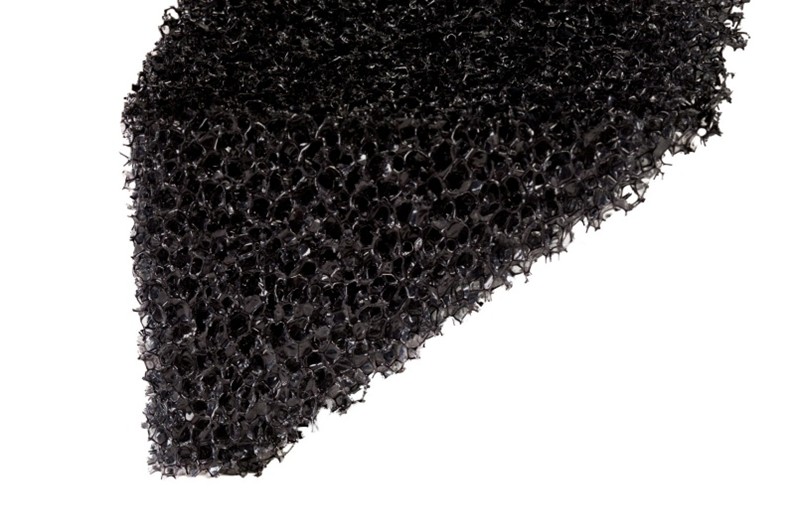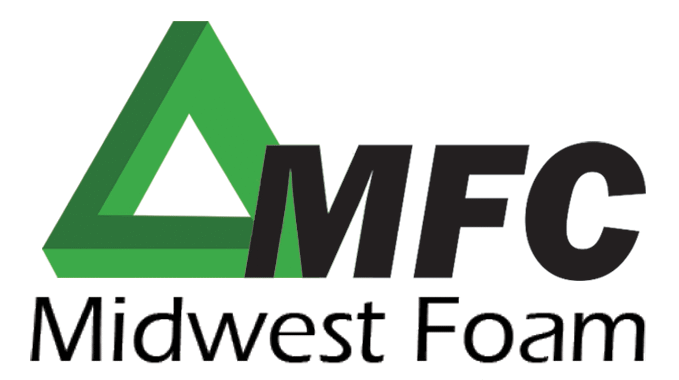Reticulated polyurethane polyether foam is an open cell foam. The term “reticulated” refers to the process of removing the cell walls (or membranes) from the foam, leaving behind only the interconnected skeleton of strands. The open pores allow air and water to flow through quickly, which allows the foam to dry quicker, thus this is why this type of foam is known as dri-fast foam. Reticulated polyether foam is a flexible, affordable foam, which has many applications. It has applications in areas such as outdoor or marine furniture, gaskets, automobiles, sound absorption, filtration, and much more.
Reticulated foam can be produced in two different methods. Thermally reticulated foam is created in a thermal reticulation chamber which produces the pores in the foam. This method involves positioning a bun of foam into a vacuum combustion chamber. The foam is then injected with a mixture of hydrogen and oxygen. Once the foam is completely penetrated, the gases are ignited by a high temperature flame. The small thermal explosion burns away the holes in the foam, which leaves the interconnect strands, and creates the pores. Reticulated foam can also be created through an in-situ method, which involves chemicals in the production of the foam, which removes the cell membranes and opens up the cells. Both methods create very durable open pores in the foam.
The pores of the reticulated foam can be produced in a wide range of pore size. A 10 PPI (pores per inch) is more coarse, and the large pores can be useful if a large amount of fluid needs to flow through the foam. The range of pores per inch will also partially determine the smoothness of the foam. A 100 PPI is very small pores and will produce finer foam. The lower the PPI, the more see through the foam is as well. The application of the foam sometimes determines the proper PPI.
During the manufacturing process, different additives can also be added to reticulated foam to make it more flame retardant, antistatic, antimicrobial, and ultraviolent resistant among other beneficial properties.
Reticulated foam is widely chosen by manufacturers because of its benefits:
- Lightweight: the highly porous structure allows the foam to be very airy and light
- Filtration: different pore sizes and high flow rates allows for efficient filtration
- Cushioning: ideal material for packaging and shock absorption, very durable
- Odor: it does not produce strong odors or leave off gases
- Flexibility: It has a high tensile strength and retains elasticity
- Affordability: a low cost foam due to manufacturing and fabrication costs
- Easy to Clean: as it is quick drying and can be easily cleaned with water
- Chemical Resistance: resistant to many chemicals and solvents depending on the foam formulation
While reticulated polyurethane foam may not be the first type of foam that comes to mind when thinking about foam, it has many applications and can be very beneficial. Examine your polyurethane foam needs and reticulated foam may be a benefit that was not previously considered.

Reticulation Chamber with two polyurethane buns to be reticulated

Reticulated Polyurethane Polyether Foam, approximately 30 PPI
